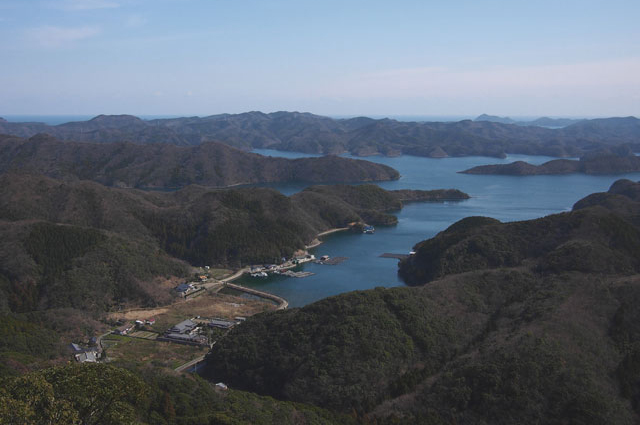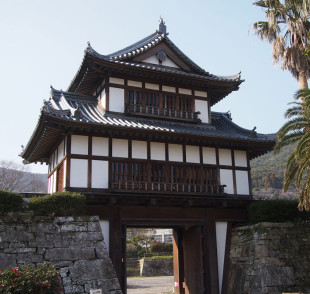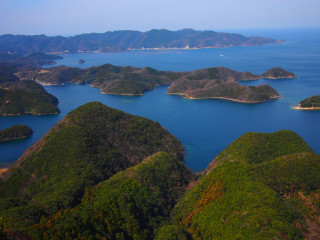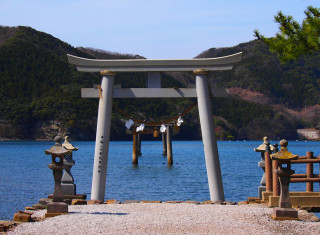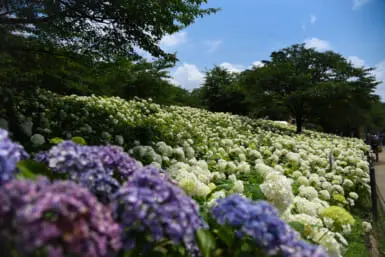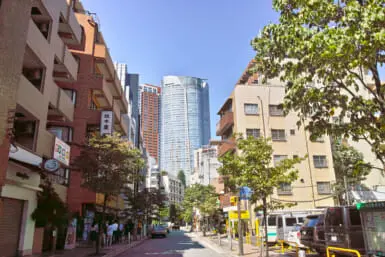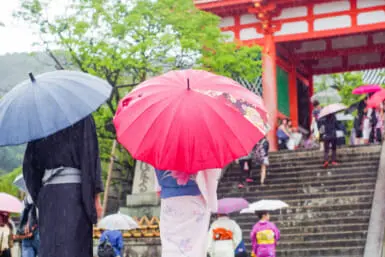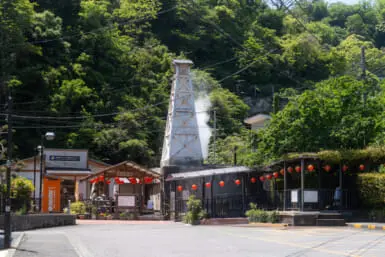Following a visit to Iki, the second stop on our tour of Nagasaki’s unsung islands took us to Tsushima, whose history has been shaped by its closeness to mainland Asia.
Text and pictures by Alec Jordan
International relations have been at the heart of Tsushima’s history for centuries, and a look at a map will quickly tell you why: Japan’s closest neighbor, South Korea, lies less than 50 kilometers away. When the skies are clear, you can see parts of the country’s coastline, and it’s easy to pick up Korean radio stations if you’re in the mood to get your K-Pop straight from the source. Thanks to a high-speed ferry service from Pusan, the island has become a popular destination for Korean tourists, many of whom come over for a day’s worth of sightseeing and shopping.
Hundreds of years ago, the trade between the nations consisted of far more than day trips. At its peak, the flow of silver from Japan, and silk, pottery, and ginseng from Korea made the dominant families of the island very wealthy indeed, and Tsushima held a political power within Japan that far outweighed its size, thanks to the money and resources that passed through its ports.
This proximity to mainland Asia also led to plenty of conflicts on the island, and over the centuries, Tsushima found itself as the first line of defense against invaders from the west. Ruins of castles, forts, and walls, dating as far back as the late seventh century, and as recently as the 20th century, stand as reminders of battles with Korean, Mongol, and Russian forces. But over the long stretches of peaceful relations with its closest neighbor, Tsushima served as a location for diplomacy, international commerce and intercultural exchange. During the Edo period, it was the first stage for the Korean delegations that would come to visit the shogun. These diplomatic envoys would stop at many cities on their way to the capital, gathering groups of local Japanese representatives at each city and swelling into a diverse collection of local lords, soldiers, and servants several thousands strong.
You can learn more about these understudied historical chapters—including the story of a Japanese diplomatic community that was established in South Korea—at the Prefectural Tsushima History and Folk Customs Museum, near the center of the town of Izuhara. Close by is the impressive temple Banshoin, which was built in 1615, in honor of the first lord of Tsushima, So Yoshitoshi.
In addition to its rich history, Tsushima is an island of great natural beauty. It’s best explored by car, and rental services can easily be found close to the ferry terminal or the airport. There are several points on the island that afford spectacular views, including Shiratake, Tsushima’s most sacred peak: many islanders still remove their shoes when they reach the summit. If you’d like an outstanding vista with a bit less of a climb, you can also head to the viewing platforms at Mt. Eboshi or Kamizaka Park. Both provide 360-degree panoramas that reveal a striking facet of Tsushima’s geography: it is made up of more than 100 mostly uninhabited islands. By night, the scene takes on an entirely different atmosphere, with the water lit up by dozens of isaribi—the brilliant lights used as lures on the fishing boats of Tsushima.
While you explore the forested areas of the island, you might want to cross your fingers and keep an eye out for a rare creature that is also one of the symbols of the island: the Tsushima yamaneko, or leopard cat. It’s unique to the island, and while you might see it on postcards and in tourist guides, seeing one in the wild is not something you should get your hopes up for. One traveler we talked with saw one on a hike earlier that day, but many locals haven’t seen one outside of captivity at all, and even some veteran outdoorsmen have only seen the Tsushima yamaneko once or twice in 10 or 20 years of exploring. Birders, on the other hand, will not be disappointed by the wide avian variety that can be seen on Tsushima, as it the island serves as an international waypoint for hundreds of migrating birds, some of which come all the way from Southeast Asia. One more natural phenomenon we would recommend happens only once a year, in May, when the Waniura district of the town of Kamitsushima—in the north of the island—blossoms into huge clouds of white that spill up the surrounding mountains as thousands of hitotsubatago trees come into bloom. Known poetically as umiterashi (illuminating the sea) or more humorously as nanjamonja!? (what on earth is this!?), this sight earned the district a listing on the registry of Japanese National Treasures.
The natural surroundings of Tsushima make for an excellent opportunity to enjoy a variety of outdoor activities: hiking can be done year-round, while during the warmer months, you can go on sea kayaking excursions, making your way around some of the smaller islands and dropping in at one of them for lunch. One memorable spot that can be visited by land or sea are the five torii at Watazumi Shrine. These stone gates, two of which are in the water, extend out from a shrine that is dedicated to two legendary ancestors of Japan’s first emperors. And if you’re just in the mood for lounging on the sand, Tsushima, like Iki to the southeast, is blessed with clear waters and some beaches that could rival tropical destinations.
In addition to the plentiful seafood to be had on the island—its yellowtail and sea bream are particularly well known—one of Tsushima’s signature dishes is an example of how foodways crossed international borders. Rokube noodles are served in a hearty, flavorful broth made with fish, but the noodles are made from sweet potatoes, and their unique consistency shouldn’t seem unfamiliar to anyone who has ever eaten the Korean dish chapchae. Travelers with a sweet tooth should try the sweet roll cake kasumaki or sample the island’s renowned honey, which is drawn from the many beehives on the island.
At a time when tensions between Japan and Korea flare up sporadically, the history of scenic Tsushima serve as a reminder of the long history of cooperation between the two countries.
For more information for traveling to Tsushima, please visit: www.tsushima-net.org.e.ij.hp.transer.com/guide/guide1.php

